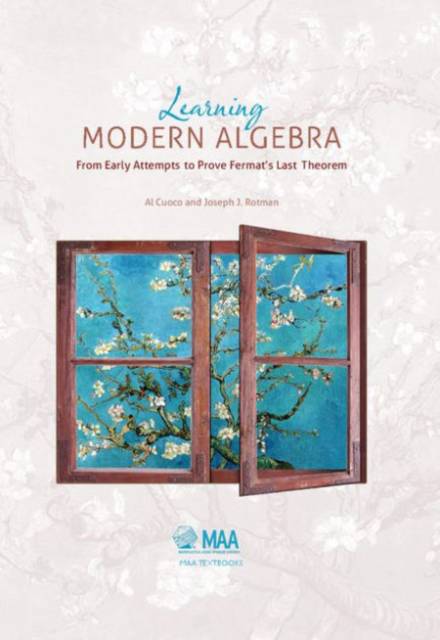
Door een staking bij bpost kan je online bestelling op dit moment iets langer onderweg zijn dan voorzien. Dringend iets nodig? Onze winkels ontvangen jou met open armen!
- Afhalen na 1 uur in een winkel met voorraad
- Gratis thuislevering in België vanaf € 30
- Ruim aanbod met 7 miljoen producten
Door een staking bij bpost kan je online bestelling op dit moment iets langer onderweg zijn dan voorzien. Dringend iets nodig? Onze winkels ontvangen jou met open armen!
- Afhalen na 1 uur in een winkel met voorraad
- Gratis thuislevering in België vanaf € 30
- Ruim aanbod met 7 miljoen producten
Zoeken
Omschrijving
Much of modern algebra arose from attempts to prove Fermat's Last Theorem, which in turn has its roots in Diophantus' classification of Pythagorean triples. This book, designed for prospective and practising mathematics teachers, makes explicit connections between the ideas of abstract algebra and the mathematics taught at high-school level. Algebraic concepts are presented in historical order, and the book also demonstrates how other important themes in algebra arose from questions related to teaching. The focus is on number theory, polynomials, and commutative rings. Group theory is introduced near the end of the text to explain why generalisations of the quadratic formula do not exist for polynomials of high degree, allowing the reader to appreciate the work of Galois and Abel. Results are motivated with specific examples, and applications range from the theory of repeating decimals to the use of imaginary quadratic fields to construct problems with rational solutions.
Specificaties
Betrokkenen
- Auteur(s):
- Uitgeverij:
Inhoud
- Aantal bladzijden:
- 480
- Taal:
- Engels
- Reeks:
Eigenschappen
- Productcode (EAN):
- 9781939512017
- Verschijningsdatum:
- 8/01/2015
- Uitvoering:
- Hardcover
- Formaat:
- Genaaid
- Afmetingen:
- 196 mm x 273 mm
- Gewicht:
- 1102 g

Alleen bij Standaard Boekhandel
+ 103 punten op je klantenkaart van Standaard Boekhandel
Beoordelingen
We publiceren alleen reviews die voldoen aan de voorwaarden voor reviews. Bekijk onze voorwaarden voor reviews.











